Speakers' Abstracts and Biographies
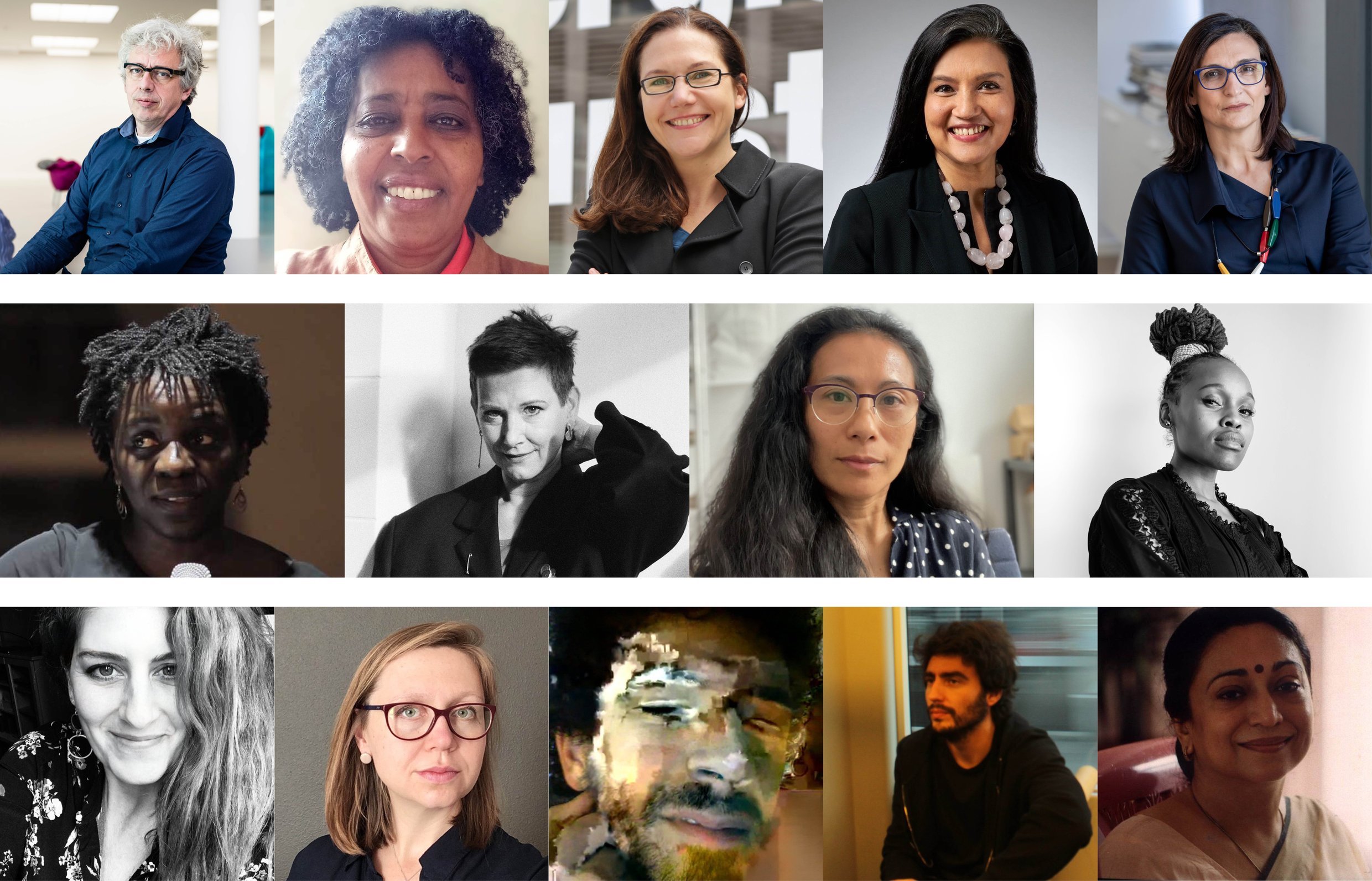
From November 11 to 13, 2022, CIMAM will hold the 54th edition of its Annual Conference in a scenic location in the middle of the Mediterranean Sea, in the archipelago of the Balearic Islands, between Africa, Europe and the Middle East, to explore how museums can actively embrace, partner, and actively listen. It will also claim the urgency for museums to adapt and become spaces of shared encounter and hospitality, allowing themselves to be a permeable and vulnerable community capable of embodying multiple bodies; institutional, political, social, human, or non-human.
Over the course of three days, the concept of The Attentive Museum will be addressed as an opportunity to take a broad view of the work that can and should be done to ensure the relevance and impact of museums, developing institutional practices that make sense for all of contemporary society, even in these times of conflict and war, and practicing active listening within the museum community to reach beyond.
The 13 invited speakers will propose different models that can provide a roadmap for institutions through an exploration of new models of governance, and narratives of decolonial discourses, concluding with a vision beyond the museum world to collectives and new institutional models from which we can learn a more sustainable future.
Follow us and Tag CIMAM in your posts!
Twitter: @infoCimam
Instagram cimam_museums
Facebook: @CIMAM.Int.Committee
LinkedIN: CIMAM International Committee for Museums and Collections of Modern Art
Follow the conference hashtags:
#CIMAM22
#TheAttentiveMuseum
Day 1: Changing from the Inside: How should we Govern Ourselves?

Introduction
Bart de Baere, General and Artistic Director, M HKA Museum van Hedendaagse Kunst Antwerp, and CIMAM Board Member, Antwerp, Belgium.
Even if I’ve been asked explicitly for a personal reflection, this talk is foremost reporting about a collective effort. During the biweekly meetings with CIMAM’s Museum Watch Committee, we often concluded that the root cause of a crisis was often governance deficits. Because Cimam was focussing on re-establishing its relation with ICOM, I contacted two of its standing committees, INTERCOM, its management committee, and ETHCOM, responsible for the ethical code of museums.
We started a research program with INTERCOM that now leads to a joint proposal to ETHCOM about why and how to include the governance question in the next iteration of the ethical code. We felt that the preparative text to this might be of help to colleagues on its own behalf and published it last week.
Indeed, a lot of us experience that governance is now often rhetorically taking the lead, in real terms harassing museum operations. Not only as high voltage events in situations of crisis as in the recent Polish cases but all over, also appearing as mains voltage or low voltage effects in daily business. We need a more holistic proactive stance to this if we don’t want systemic to disrupt our core mission.
Contemporary art museums are bipolar institutions, combining the eternal challenges coming from art with a cultural heritage sense of sustainability. Combining those two requires a committed staff backed up by its boards, and with founders underwriting this dual approach. We can’t live up to the challenges if our governing bodies want to merely control and normalize our operations.
BIOGRAPHY:
Bart De Baere is the director of M HKA, the Museum of Contemporary Art in Antwerp, and board member of the Museum Watch Committee of CIMAM.
With a background in archeology and art history De Baere’s experience is broad. He served as a chairman of the Flemish Council for Culture, which advises the government on cultural policy, and he was advisor for cultural heritage and contemporary art to the Flemish Minister of Culture. From 1986 to 2001, he was curator at the Museum of Contemporary Art in Ghent (now S.M.A.K.). He organised and curated events for several venues abroad including Documenta IX in Kassel where he was member of the curatorial team.
Bart De Baere’s writing, theoretical texts and interviews have been featured in a variety of publications, including Eurasia and Transnational Thinking, in Jimmie Durham: Festschrift (edited by Maria Thereza Alves), Nero, 2020, pp. 80-87.
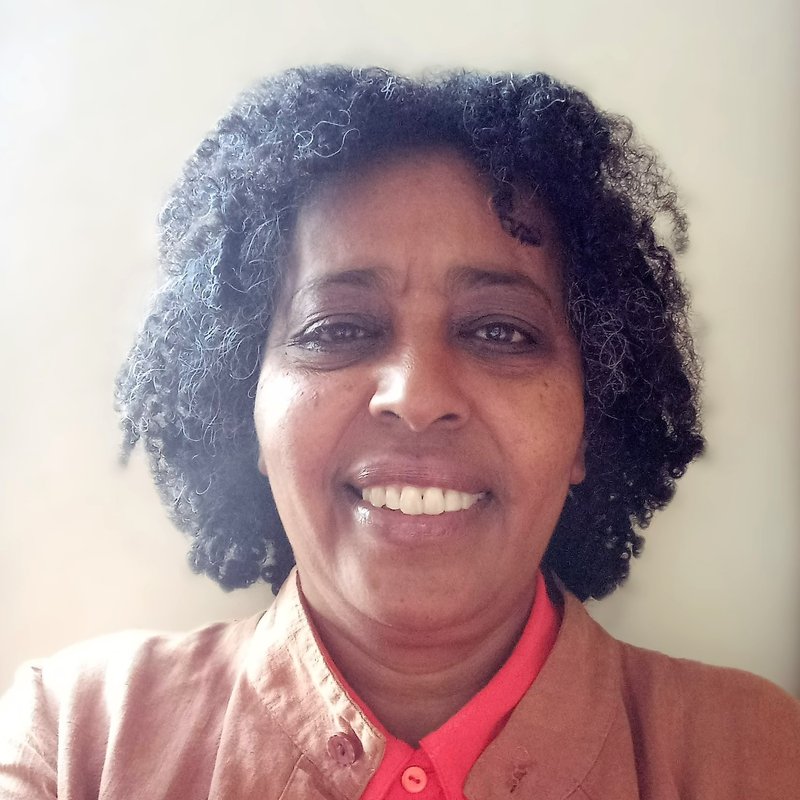
Perspective
Meskerem Assegued Bantiwalu, Curator and General Director, Zoma Museum PLC, Addis Ababa, Ethiopia
Zoma Museum
One of the most unique aspects of humanity is its insatiable desire to outlive itself. The purpose of museums is to house, preserve, study, and document monumental objects or ideas by inventive minds and guarantee their longevity. Museums collect new art that reflects the moment to attract a new and young audience. The youth, who are worried about their future are trending away from categorizing and labeling humans. They are also concerned about climate change and social justice. They use their technological and social media savviness to share their opinions and creativity openly and freely. Museums will depend on them as stakeholders and decision makers who will bring new and alternative curatorial and collection approaches.
Zoma Museum is a private limited company whose goal is to be financially autonomous. It has ongoing exhibitions, workshops, and symposiums in the galleries as well as live performances at the outdoor amphitheater. It often collaborates with local and international art institutions and businesses. Its winding walkway through its eclectic indigenous garden is designed to accommodate wheelchairs, the elderly, and children. Recently, eBIRD named Zoma Museum one of the birdwatching hotspots for the various birds attracted by the local flora. The dairy cows, goats, sheep, chicken, rabbits, and tortoises in the compound are a major attractions to families with children. The presentation at CIMAM will focus on how museums can think creatively in response to current issues and how they can position themselves for the future.
BIOGRAPHY:
Meskerem Assegued is a curator, anthropologist, writer, and co-founder of Zoma Museum with Elias Sime. She curated Giziawi #1, an art happening; Divine Light by David Hammons in Addis Ababa; and Green Flame, the visual art exhibition of the New Crowned Hope Festival by Peter Sellars in Vienna. She co-curated Eye of the Needle Eye of the Heart at Santa Monica Museum of Art with Sellars; Curvature of Events at the Staatliche Kunstsammlungen Dresden; Johannes Haile: With Different Eyes at Institut für Auslandsbeziehungen, Germany; and Vital Signs at Katzen Art Center, Washington DC. She recently co-designed and constructed the landscape and buildings at the Menilik’s Grand Palace and is currently constructing Zoma Village Entoto with Sime in Addis Ababa.
She has participated in various workshops and symposia, including those organized at MoMA and Tate Modern. She was awarded France’s Chevalier dans l’ordre des Arts et des Lettres, and has been a member of the selection committees for Dak’Art and the Venice Biennale African Pavilion.
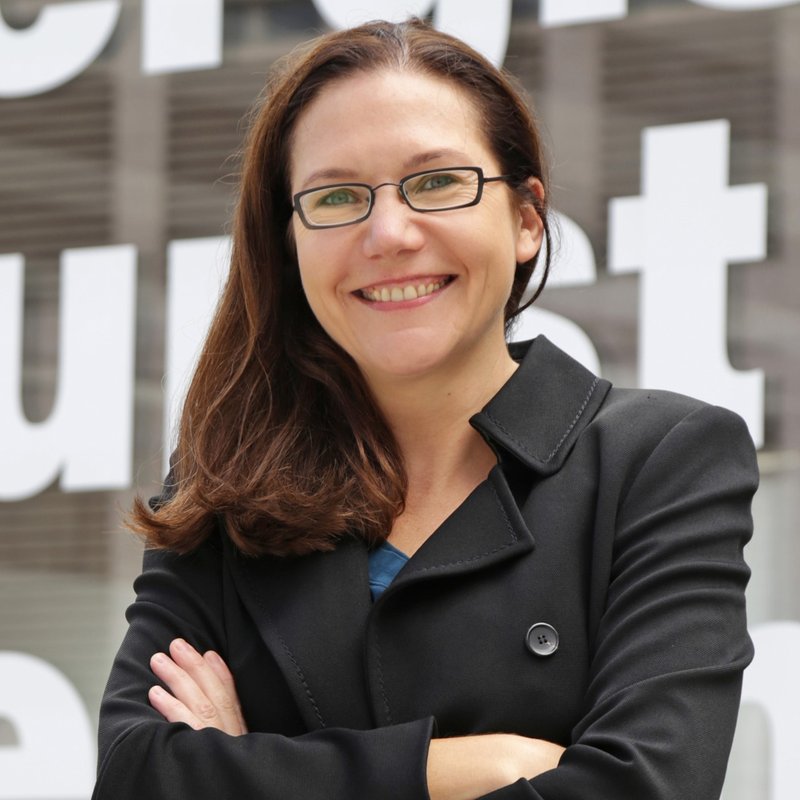
Perspective
Iris Dressler, Codirector, Württembergischer Kunstverein Stuttgart, Stuttgart, Germany
Negotiating conflicts and connecting lines
If the goal of the public museum or public art institution of the future is to be a more just or even equitable institution, it cannot correspond to one model that would cancel out all contradictions, but can only emerge on the basis of permanent, decentrally negotiated conflicts and connecting lines – divisible and indivisible moments of joy, empowerment and sorrow, success and failure, agreement and outrage, understanding and misunderstanding, friendship and rupture. Listening would then mean being able to both allow and question and reject criticism – beyond the competitive pursuit of a positive image, exclusivity and superlatives. How can we embrace each other without smothering each other?
In my contribution, I would like to tie these reflections to two aspects:
- Despite decades of debate, the still dominant and unfair working conditions within the art industry, ranging from artists* to interns.
- The conflicts between two high values: artistic freedom and the fight against discrimination. In the context of documenta 15, this conflict was and is being instrumentalised in Germany in a highly questionable way by the media and politics, with the result that in the name of anti-discrimination, the most diverse forms of discrimination have been and are being given free rein. In this way, documenta 15 was and is being distracted from the fact that it makes a few fundamental suggestions for a structural change in the art world.
BIOGRAPHY:
Iris Dressler and Hans D. Christ have been Codirectors of the Württembergischer Kunstverein (WKV), Stuttgart, since 2005, with a particular focus on the exploration of collaborative, transcultural, and transdisciplinary practices of curating. In 2019, they were the artistic directors of the Bergen Assembly, and in 1996 they founded the Hartware Medienkunstverein, which they directed until 2004.
Under their direction, the Kunstverein has presented solo exhibitions of artists such as Carrie Mae Weems (2022), Lorenza Böttner (2019, curated by Paul B. Preciado), Imogen Stidworthy (2018), Alexander Kluge (2020 and 2017), Ines Doujak (2016), Teresa Burga (2011, curated by Miguel Lopez and Emilio Tarazona), Michaël Borremans (2011), Daniel G. Andújar (2008), Anna Oppermann (2007, curated by Ute Vorkoeper), and Stan Douglas (2007). Recent group exhibitions include the four-part project Actually, the Dead Are Not Dead (2019–22 in Bergen and Stuttgart with various constellations of co-curators) and 50 Years after 50 Years of the Bauhaus (2018). She teaches regularly at the Staatliche Akademie der Bildenden Künste, Stuttgart, and elsewhere, and has published largely on contemporary art and its political and theoretical contexts.
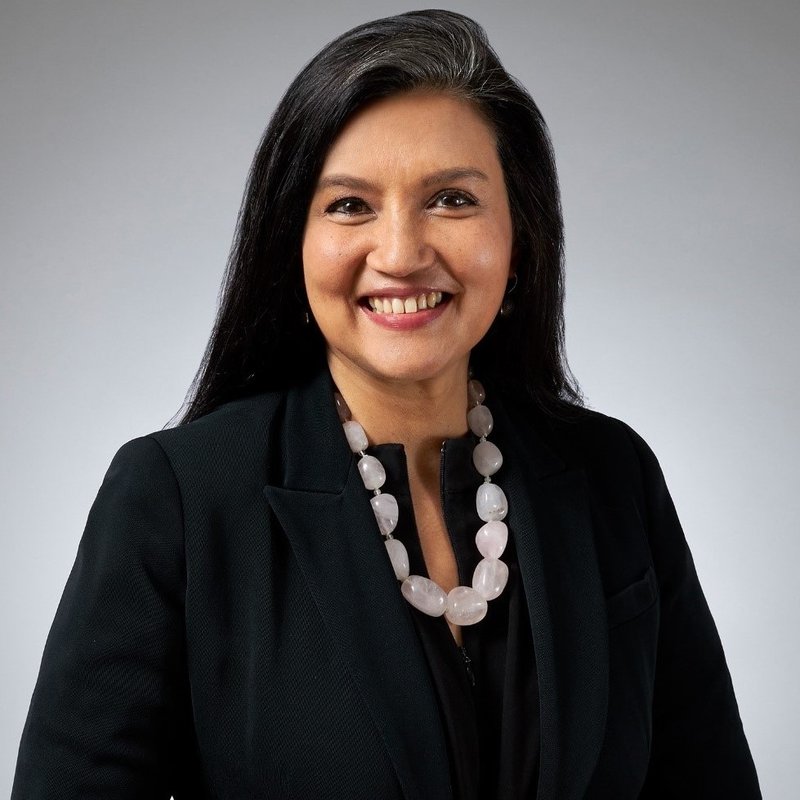
Perspective
Suhanya Raffel, Museum Director, M+, Hong Kong
M+: to see is to believe
The opening of a new museum of scale, M+ in Hong Kong, offers an opportunity to reflect on, and share with professional colleagues, a range of issues that include the establishing of a museum voice that captures the vision for a community through to understanding what it means to negotiate with key stakeholders to bring the museum to the public. Over the last 6 years my focus has been on delivering and sustaining an institution while facing a range of challenges that include pandemic, social unrest, supply chain interruptions, travel restrictions, managing local and global expectations in the face of ensuring curatorial integrity and excellence as the base benchmark of the museums work. Relevance, resilience and negotiated positions are embedded in the success of M+, as we welcomed over 1 million people over a period of 4 months attendance. Hong Kong, a city of 7.5 million people, used to welcome over 50 million people in a year, is currently a city without any border open to the world. At the time of preparing for this CIMAM panel which considers an introspective idea, of changing the institution from inside, opening M+ brings a crucible of ideas and intentions that has been profoundly shaped by this particular time.
BIOGRAPHY:
Suhanya Raffel was appointed Director of M+ in the West Kowloon Cultural District of Hong Kong in 2016. The museum opened to the public in November 2021.
Previously, she was Deputy Director and Director of Collections at the Art Gallery of New South Wales (AGNSW), Sydney (2013–16), and has held many senior curatorial positions, including Deputy Director of curatorial and collection development from 2010 and Acting Director in 2012 at the Queensland Art Gallery/Gallery of Modern Art, Brisbane (1994–2013). In 2009–14, she was a member of the Asian Art Council at the Guggenheim Museum, New York, and in 2010–15 served on the boards of the Australia-China Council, Department of Foreign Affairs and Trade, Canberra, Griffith University Asia Institute, Brisbane (2010–15) and LendLease Public Art Advisory Committee (2014–16).
In 2020, she was awarded France’s Chevalier dans l’ordre des Arts et des Lettres and is the 2022 Sydney University Alumni Achievement Awardee for Cultural Contribution. She has been on the Board of CIMAM since 2016, and since 2021 has also been a member of the Bizot Group, as well as a Trustee of the Geoffrey Bawa Trust and the Lunuganga Trust, Sri Lanka (1994 –).

Perspective
Nuria Enguita, Director, Instituto Valenciano de Arte Moderno, Valencia, Spain.
Enhancing governance in the cultural sector: the IVAM perspective
Many several institutions face the challenge of implementing new systems of governance that, from one side, ensure the active participation of a diversity of voices in the decision-making processes and, from the other, implement new institutional agendas toward the SDG as a shared blueprint for global peace and shared prosperity.
This presentation aims to share the IVAM experience. Since 2019 the institution is introducing a new governance approach that pursues to reinforce some of its historical institutional weaknesses, especially in all concerning the relationship with local communities.
BIOGRAPHY:
Graduate in History and Theory of Art from the Universidad Autónoma de Madrid. She is currently director of IVAM, Valencia. Between 2015 and 2020 she was director of Bombas Gens Centre d'Art, Valencia, and between 1998 and 2008 artistic director of Fundació Antoni Tàpies. Between 2000 and 2014 member of the management team of the arteypensamiento program of the International University of Andalusia- UNIA and co-editor of Afterall Journal between 2007 and 2014.
Between 1991 and 1998 she was curator at IVAM-Instituto Valenciano de Arte Moderno, Valencia. She has been co-curator of the 31st São Paulo Biennial, 2014; of Manifesta 4 in Frankfurt in 2002 and of the International Meeting of Medellin in 2011. She has lectured on art theory and art management in numerous centers and universities and has published numerous texts in catalogs and contemporary art magazines such as Parkett, Afterall and Concreta.
Day 2: Unlocking History and New Narratives

Keynote
Denise Ferreira da Silva, Prof. Dr., University of British Columbia, Vancouver, Canada
After It's All Said
Throwing blacklight onto the contemporary art stage, the artwork and practices, in this presentation Denise Ferreira da Silva comments on artistic interventions that confront the colonial, racial, cisheteropatriarchal matrix of the transparent I, the figuring of the modern subject presupposed in the position of the appreciator. She focuses on how these radical interventions not only refuse to mean, to signify, immediately but they assemble artistic forms that signal a position of enunciation that is unnamable, ungraspable, un-visible and as undeterminable, and yet as effective as that of the presumed subject of appreciation. Whatever it is called, if a name is needed, this approach, reading of contemporary art through the lens of refusal, that is, as a scene of confrontation, does not fit very well into conventional descriptions of (aesthetic/art) criticism and (theoretical) critique; it does not immediately mobilize or easily recall any critical theoretical orientation.
BIOGRAPHY:
Director of the Social Justice Institute at the University of British Columbia, she is the author of Toward a Global Idea of Race (University of Minnesota Press, 2007), A Dívida Impagavel (Oficina da Imaginaçāo Política and Living Commons, 2019) and co-editor (with Paula Chakravartty) of Race, Empire, and the Crisis of the Subprime (Johns Hopkins University Press, 2013). She has had several articles published in leading interdisciplinary journals, such as Social Text, Theory, Culture & Society; PhiloSOPHIA; Griffith Law Review; Theory & Event; The Black Scholar. Her artistic works include the films Serpent Rain (2016), 4Waters-Deep Implicancy (2018), Soot Breath/Corpus Infinitum 2020 (in collaboration with Arjuna Neuman), and the relational art practices Poethical Readings and Sensing Salon, in collaboration with Valentina Desideri. She lives and works on the traditional, ancestral and unceded territory of the hən̓q̓əmin̓əm̓-speaking Musqueam people.
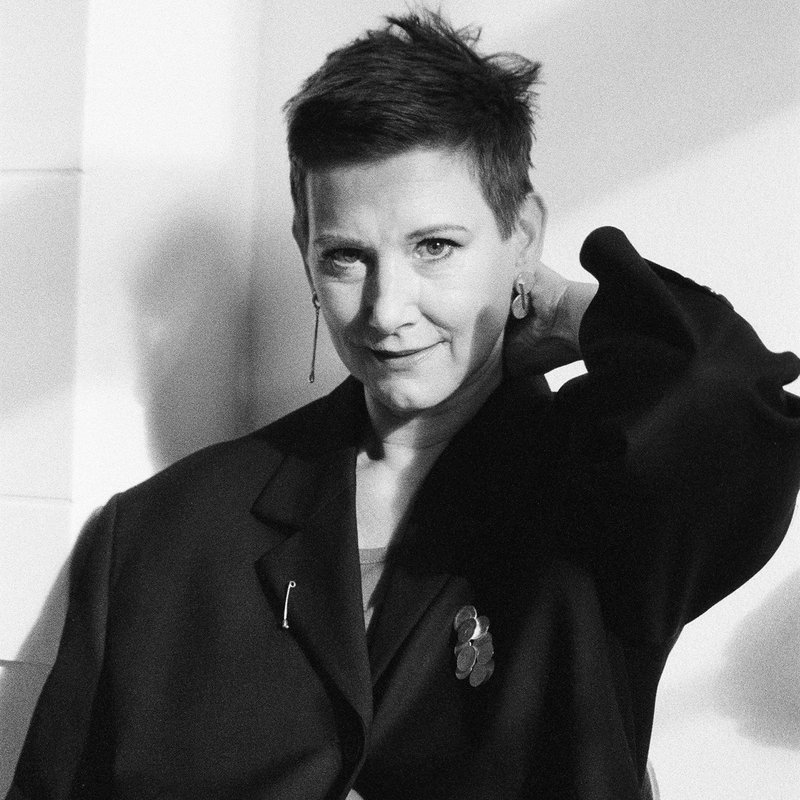
Perspective
Clémentine Deliss, Associate Curator, KW Institute for Contemporary Art, Berlin, Germany
The Museum of Remediation
During the lockdowns in 2020-21, museums in Europe were largely closed. As the pandemic waned, entry was restricted to the vaccinated, and precautionary measures prevented both the production and consumption of exhibitions. The impact of this condition in 2022, coupled with the effects of the war in Ukraine, and global ecological questions occasions a necessary rethink of the sustainability and timeframes of exhibition programming, and of how a museum can care for, protect, and educate its visitors, especially those in a liminal state between trauma and joy. The Museum of Remediation addresses the central role played by collections in the redesign of museums and exhibitions in the twenty-first century. While restitution takes its course, remediation addresses the looted cultural heritage of the Global South still held in serial quantity in European museums. In their multiplicity, these collections can become the metabolic generator of inclusive public education. Segments of diverse collections are brought together, placed on purpose-built mobile furniture, and studied in different constellations. Nothing is seen in isolation or atomized by a singular disciplinary norm of contextualization. Through an alternative implementation of the collection, museums fulfill their role as civic venues for democratic inquiry, for the learning and flourishing of every individual, regardless of age, class, race, or education. The public shifts from consumer to student, and exhibits become channels of decolonial healing and transdisciplinary innovation. To enter a museum, no exam is necessary.
BIOGRAPHY:
Dr. Clémentine Deliss works across the borders of contemporary art, curatorial practice, independent publishing, and critical anthropology. She is currently Global Humanities Professor of History of Art, University of Cambridge, and Associate Curator of KW Institute for Contemporary Art, Berlin, where she is developing the Metabolic Museum-University. Between 2010–15, she was the director of Weltkulturen Museum in Frankfurt, where she instituted a new research lab for post-ethnographic research and developed several exhibitions including Object Atlas – Fieldwork in the Museum (2011); Foreign Exchange (or the stories you wouldn’t tell a stranger) (2014); and El Hadji Sy – Painting, Performance, Politics (2015). In 2016, she directed Dilijan Arts Observatory in Armenia for the exhibition Hello World. Revising a Collection, National Galerie im Hamburger Bahnhof, Berlin. In the same year, she was Visiting Professor at the Ecole nationale supérieure d’arts Paris-Cergy and held an International Chair at the Laboratoire d’excellence des arts et médiations humaines, Université Paris 8 and Centre Georges Pompidou. In 2018–19, she was Interim Professor of Curatorial Theory and Dramaturgical Practice at the Karlsruhe University of Arts and Design. Between 2019–20, she taught at the University of Fine Arts, Hamburg. She is a Fellow of the Institute of Advanced Study, Berlin, and mentor of the Berlin Program for Artists and Faculty at Large of SVA Curatorial Practice. Her book The Metabolic Museum (2020, Hatje Cantz) came out in Russian translation in 2021, published by Garage Museum, Moscow.
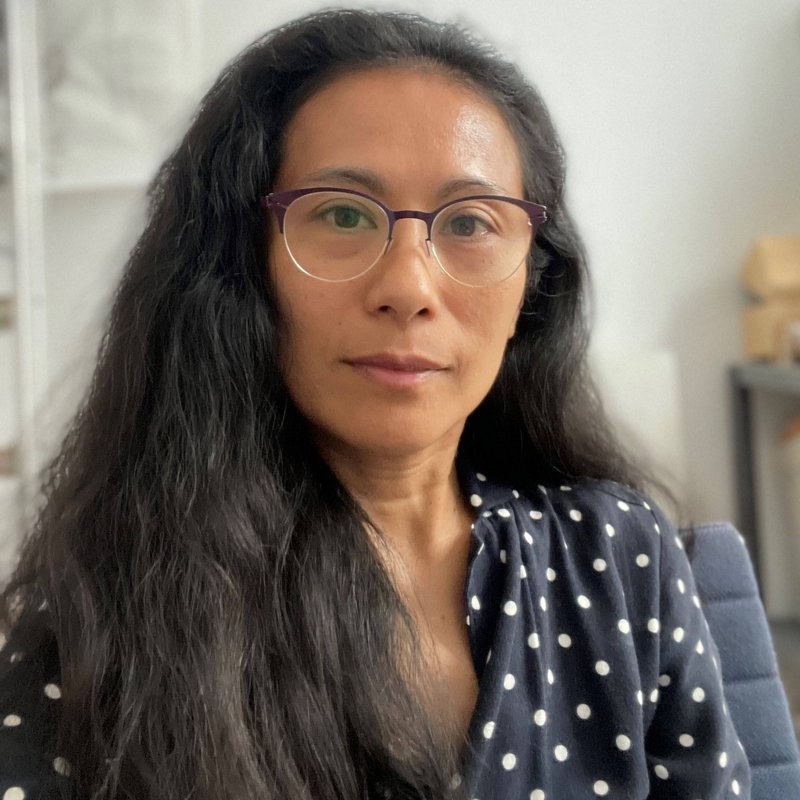
Perspective
Sandra Gamarra Heshiki, Visual Artist, Independent, Lima, Peru/Madrid, Spain
Uncomfortable Museum
José María Arguedas, Peruvian writer and anthropologist, presents the mestizo in his work as a mediator between two cultures that, in their opposition, must be complementary to coexist. This mestizo presents infinite gradations as he positions himself in a back-and-forth space, where he is constantly colliding and renegotiating between two sensibilities. The mestizo is not understood as the common result of a unifying project. Parting from this ambiguous place, Arguedas undertakes the vital task of collecting native knowledge from his Andean sensibility, while, from his Western sensibility, he writes novels that portray the Andes for a reader unfamiliar with it. He understands writing as a battlefield and transforms the difficulties of translation into a place to experiment possible solutions for coexistence.
The land on which the art museum is located is not a common ground, it is a space to propose encounters and disagreements, where conflicts have to be present to jointly activate possible models of coexistence.
BIOGRAPHY:
Sandra Gamarra Heshiki (1972) was born in Lima, Gamarra, and studied Fine Arts at the Pontifical Catholic University of Peru. In 2003, she moved to Madrid to complete her art studies, where she developed her work until 2019. She utilizes painting in a figurative way to conceptually cross-examine art and its mechanisms. Based on appropriations, her work acts as a mirror that displaces exhibition formats, alters the circulation of images, and subverts the ownership of culture, as well as the narrative between art and its viewer. Within this field of investigation, her Peruvian background adds a syncretic gaze where pre-Columbian, colonial, and Western cultures collide. Some of her recent exhibitions recontextualize art genres such as the landscape, self-portrait, and still life. In 2002, in response to the absense of a contemporary art institution in Lima, she created LiMac, a fictitious museum that first established itself with its logo on merchandize (pencils, erasers, mugs, and bags). Since then, LiMac has produced collections, exhibitions, publications, an architectural project, and a website (www.li-mac.org). She lives and works in Lima.
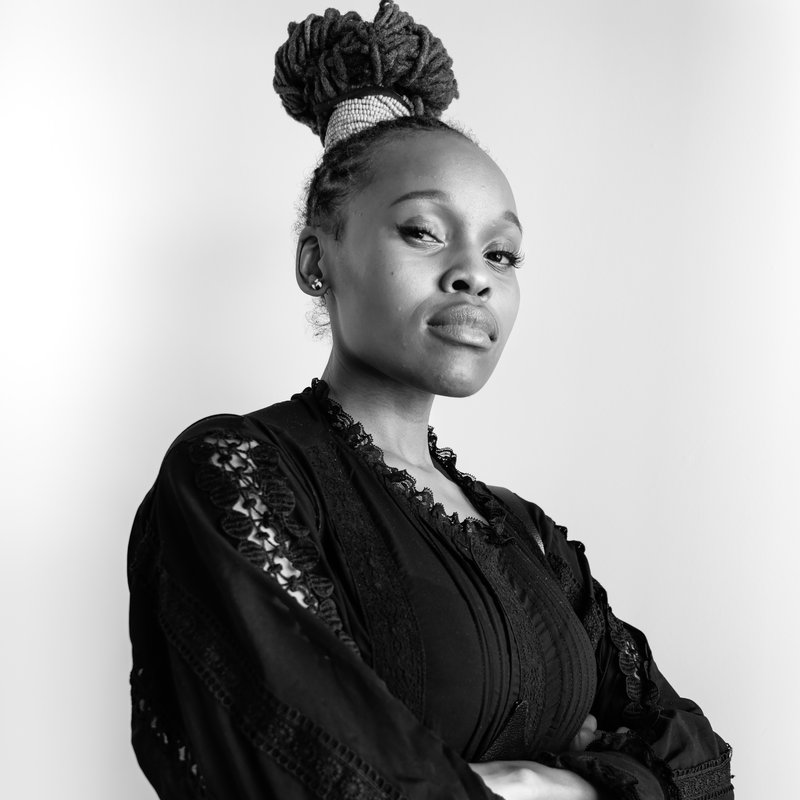
Perspective
Sethembile Msezane, Visual Artist, Msezane Studios, Cape Town, South Africa
The Seed is a Memory of the Fruit
Sethembile Msezane is part of a generation of youth that draws on traditional and spiritual teachings from her culture in creating ‘living’ and ‘ephemeral’ contemporary art that often challenges the idea of permanence in museum practice.
Her work questions how we can use ecologies of nature as a metaphor in rethinking permanence and impermanence in the preservation of knowledge. Just as the seed recognizes its origin is within the fruit, preserving knowledge also means sustaining communities.
Msezane recognizes elders as keepers of time and memory in our communities, asking that we consider them as living libraries.
The colonial project of excavating and harvesting without benefitting its source cannot continue to exist. If the museum is to remain relevant and truly archive our histories, ongoing connections to communities need to be established and maintained. In so doing, museum practice will not only benefit from the expertise of living libraries, but they will contribute to these elders remaining purposeful to younger generations in their communities, thereby investing in the cross-pollination between generations in re-imagining the future.
BIOGRAPHY:
Sethembile Msezane is an artist who uses performance, photography, film, sculpture and drawing to create works that address spiritual and political symbolism, and African knowledge systems. Drawing on her dreams, she asks questions about ancestral memory and the processes by which mythmaking is used to construct history, highlighting the absence of the black female body in both the narratives and physical spaces of historical commemoration.
She recently participated in the 14th Dak’art Biennale (2022), and previously has been a UEA Global Talent Fellow hosted by the Sainsbury Research Unit and Sainsbury Centre (2021), a Mellon Artist Residency Fellow in partnership with the University of Stellenbosch (2020), and a OkayAfrica 100 women 2018 Honoree. She was a TEDGlobal Speaker in Ausha, Tanzania (2017), a TAF & Sylt Emerging Artist Residency Award winner (2016), and was the first recipient of the Rising Light award at the Mbokodo Awards (2016). Sethembile Msezane (b. 1991) lives and works in Cape Town, South Africa.
Day 3: Learning from the Community: Collective Actions in the Face of Emergency
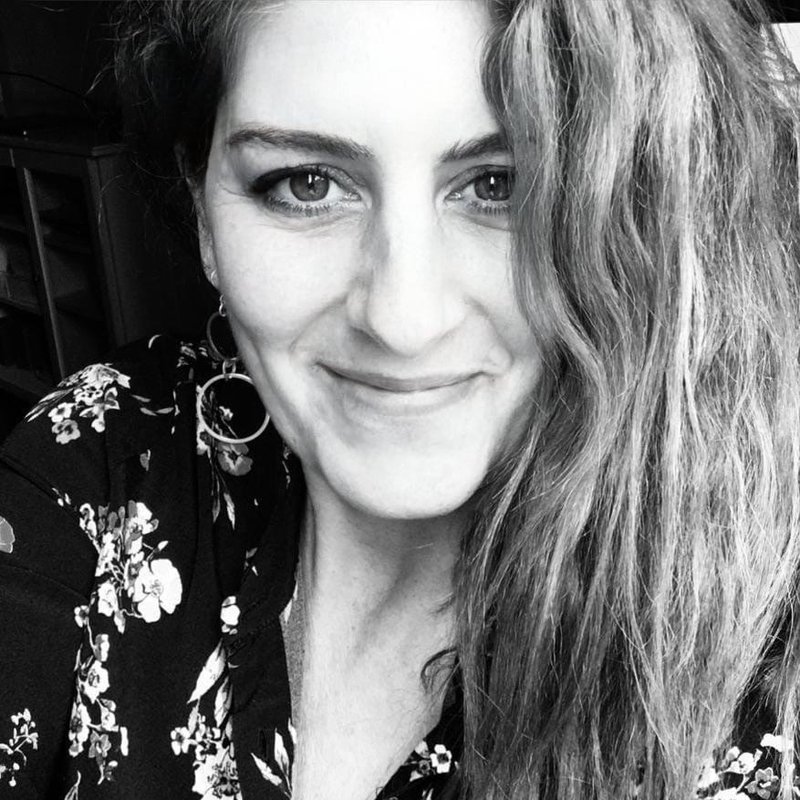
Keynote
Emily Jacir, Founder/Director, Dar Jacir for Art and Research, Bethlehem, Palestinian Territories
Our street in the middle of our house.
Transversal Methodologies and Decolonial Practices at Dar Jacir
Emily Jacir will share strategies and insights from the multi-faceted project Dar Jacir for Art and Research – a place devoted to educational, cultural, and agricultural exchanges in Bethlehem, Palestine. A process and practice-oriented platform, it is an experimental learning hub for the Bethlehem community and beyond.
Founded in 2014, Dar Jacir houses multiple programs grounded in shared encounters and hospitality. Through a participatory approach, collective knowledge is created, new works are produced, and structures for care and repair are fostered. Dar Jacir is valued by a broad public and deeply involved in community activity and collaboration in a particularly shattered territory. Intimacy is at the heart of the project. Artist-led, it facilitates and gives agency to artists and participants to lead, ask questions, and encounter international and local artists, thinkers, and cultural leaders.
Originally built in the late 1880s by al Mukhtar Yusuf Jacir, the site serves as a place in which the history and contemporary conditions of Bethlehem meet. The architecture of the home has enabled the development of innovative curatorial approaches offering opportunities for engagement that challenge the onset of the new ubiquitous neo-liberal structures throughout the area as the environment for art.
This paper will address the challenges of creating and sustaining access to culture in a community under siege and dispossession while subverting and transforming oppressive structures and social injustices, looking at forms of self-determination and autonomy.
BIOGRAPHY:
Emily Jacir is an artist, filmmaker, and educator who lives and works between Bethlehem and Rome. Her artistic practice spans a range of strategies including film, photography, sculpture, interventions, archiving, performance, video, writing, and sound. She investigates silenced histories, exchange, translation, transformation, resistance, and movement. Her works have been widely exhibited all over the world since 1994, and she has been honored for her achievements with several awards including a Golden Lion at the 52nd Venice Biennale (2007); a Prince Claus Award (2007); the Hugo Boss Prize at the Guggenheim Museum (2008); the Alpert Award (2011) from the Herb Alpert Foundation; and the Andrew W. Mellon Foundation Rome Prize Fellow at the American Academy in Rome (2015); among others. She is the founder and Executive Director of Dar Yusuf Nasri Jacir for Art and Research in Bethlehem.
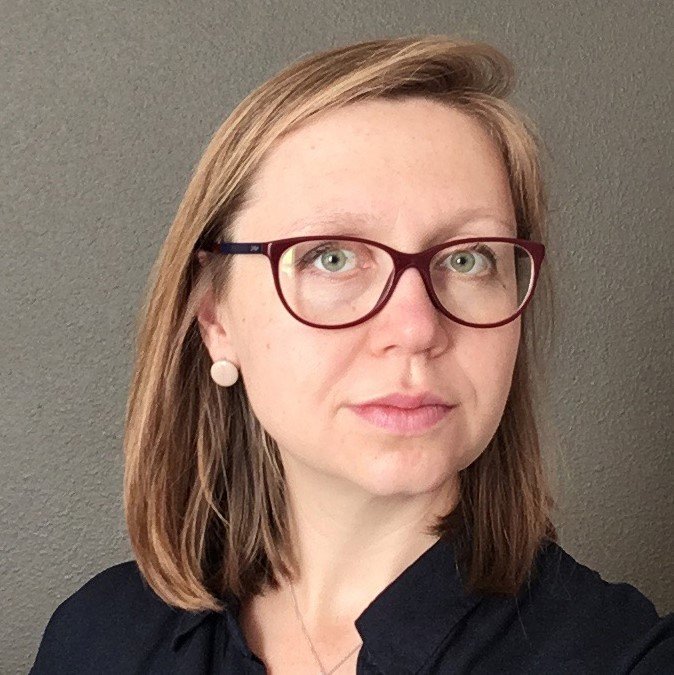
Perspective
Lada Nakonechna, artist, Method Fund, Kyiv, Ukraine
Not Waiting for the Emergency.
Collective practice in Ukraine that requires museums
Contemporary art in Ukraine is developing primarily thanks to the work of collectives, groups, communities, and grassroots initiatives. This presentation will emphasize the way in which these initiatives enter into relations with institutions, what kind of attitudes are required, and how institutional relations are imagined.
Specifically, it will examine the research and artistic seminar that the Method Fund has built in collaboration with the National Art Museum of Ukraine, titled ‘Socialist Realism. Seeming to be Another.’
While acquiring Socialist Realist art from the collections and archives of the National Art Museum of Ukraine, our goal was to examine the conditions under which it was created. At the same time, seeing contemporary art as a radical emancipatory method, the series of performative interventions into the exposition of the Socialist Realism period were conceived with the purpose of self-decolonization.
At some level, the artistic seminar provided the opportunity to reflect on the social identities constructed back in the Soviet era. Museums were forceful tools of Soviet politics, as through them a certain vision of history and reality was formed. What is a crucial is that the historically shaped perspective is still partly embodied in contemporary institutions. We clearly observe now how the legacy of Soviet Union with its terror and omnipresent newspeak plays a key role in the present state of war. Work on the representation of Socialist Realism in the museums appeared urgent, while also requiring untimely slowness, which the museum allows.
BIOGRAPHY:
Lada Nakonechna is an artist and researcher based in Kyiv. In addition to her individual practice, she is involved in a number of group projects and collectives. Since 2005, she has been a member of the R.E.P. group; since 2008, part of the curatorial and activist union Hudrada; and since 2015, a cofounder of Method Fund, and, together with Kateryna Badianova, co-curator of its educational and research programs: Course of Art and CreatingRuine.net. In 2016, she joined the new editorial board of Prostory.net.ua, an online art, literature, and politics magazine. Her artworks, which often take the form of installations incorporating drawing, photography, and text, call attention to methods of recognition, revealing the internal aspects of visual and verbal structures. Her latest investigations are based on artistic and archival materials related to Socialist Realism — understood as a “method” and institutional and educational system. Her work has been exhibited widely in such venues as the National Art Museum of Ukraine; Museum of Modern Art, Warsaw; Galerie für Zeitgenssische Kunst, Leipzig; Palais Populaire, Berlin; Museum of Contemporary Art, Zagreb; Kunsthalltrondheim, Norway; Kunstmuseum, Wolfsburg; and Center for Contemporary Art at NaUKMA, Kyiv. In 2014, she received the Kazimir Malevich Art Award.
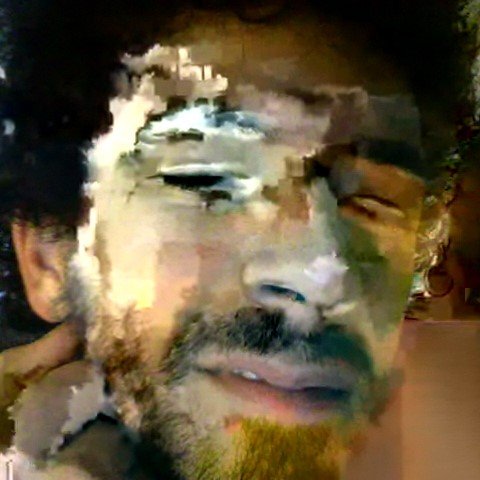
Perspective
Philip Rizk, film-maker/artist, Mosireen video collective, Cairo, Egypt
Did You Hear That?
In the book Les damnés de la terre, Frantz Fanon wrote, ‘the yardstick of time must no longer be that of the moment or up to the next harvest, but must become that of the rest of the world.’ Much of Fanon’s clarity came from the urgency of writing with his impending death in sight. Are we today in such a different place? If so, how can we enact such urgency? Fanon felt the heartbeat of the times, he heard the warning signs, and he saw much of what it would bring in the future. Learning from the community requires such an act of radical listening. This paper will take you on a brief journey from 2011 Egypt and 2012 Syria to recent forms of mass marches on the borders of the USA and Europe, asking the question: How do we prepare for the next time?
BIOGRAPHY:
Philip Rizk is a filmmaker and writer from Cairo living in Berlin. In his films, he experiments with methods of “making the habitual strange.” In Out on the Street (2015), he uses performance. In his found footage films Mapping Lessons (2020) and Terrible Sounds & Wonderful Things (2022, work in progress), he experiments with the technique of montage. In a world that is breaking down, a question that runs throughout Rizk’s projects is: “How do we prepare ourselves for what is to come?” He is a member of the Mosireen video collective behind the archive 858.ma. His texts include the essay “2011 is not 1968: a letter to an onlooker,” and the co-authored book (with Jasmina Metwaly) On Trials: A Manual on the Theatre of Law (Archive Books, 2021). He occasionally teaches in classrooms and workshops. His work can be followed @ filfilfilm.com.
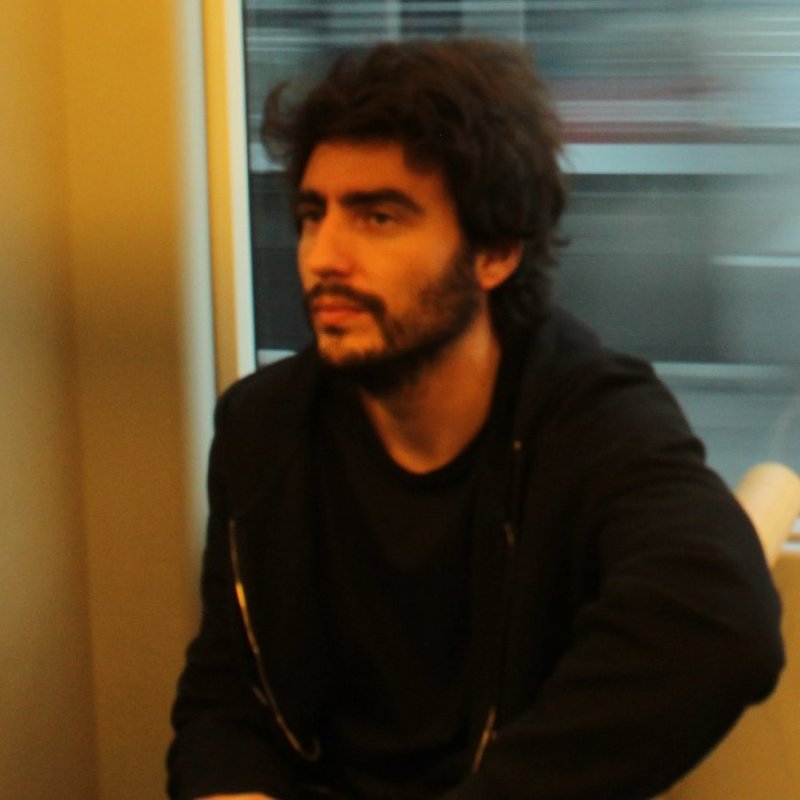
Perspective
Kike España, Dr., Architect, Urban researcher, La Casa Invisible, Malaga, Spain
Specters of Picasso
The city of Malaga has been turned into a museum theme park through a spectacular appropriation of Picasso.
Picasso was always here. That is the tourist obsession with the genius essence of Málaga. The existential reason for the museum's strategy to attract sun and beach tourists to the capital. Picasso is the essence of Malaga, that is why you should come to visit it. Malagueñization of Picasso and Picassization of Malaga. Picasso spectacle.
But Picasso was never here, only his specters. The spectral is not present as such, neither in soul nor in body, it is an invisible presence. The specters are in the practices that haunt the city, that fantasize beneath and beyond the city, that multiply the presence of the city. Because the only possible relationship with the specters is haunting.
The spectacle about Picasso only allows the commodification of the city. Only by paying attention to the specters of Picasso haunting Málaga can one appreciate the need for ghosts, the disjunction of time, the derangement of identity, the furtive and ungraspable visibility of the Invisible.
And for that museums must not be the touristic hosts but learn to live with ghosts.
BIOGRAPHY:
Kike España participates in the social and cultural center La Casa Invisible as activist and researcher, is one of the editors of the publishing house Subtextos, and is part of the collective bookshop Suburbia in Málaga. He trained as an architect and has a PhD in urban theory from the University of Seville. He collaborates in the Overtourist City research project of the School of Architecture of the University of Málaga. His more recent publications include the book Die sanfte Stadt (2021, Transversal Texts), the articles “La ciudad contra el Estado” (2020, Scienze Del Territorio) and “Städte zu verkaufen: Prozesse der Enteignung und Praktiken der Wiederaneignung in Spanien” (2019, sub\urban) and the book chapter “The City of Attractions” (2019, MNCA Reina Sofía).
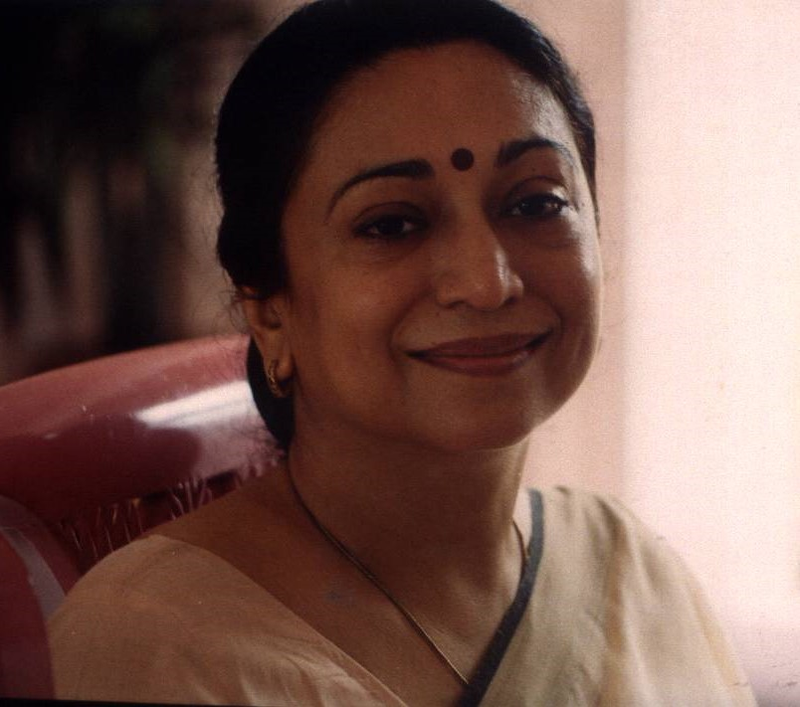
Perspective
Meenakshi Gopinath, Founder-Director, Women in Security Conflict, Management and Peace (WISCOMP), New Delhi, India
The Symbol & the Substance: The Ethics of Care in an Embattled World
The world is today in a liminal space, where the old is dying and the new has yet to be born. To live in today’s world is, for many, to live a life of paradox and contradiction. Unprecedented breakthroughs in science and technology coexist with symptoms of decay and despair. New crises plummet unprecedented numbers of human beings into ‘precarity’ – economic, social, and psychological. The added disruptions caused by COVID have completely reconfigured the world as we knew it – revealing the Janus face of the anthropocentric and androcentric paradigms of ‘progress’ and its associated pathologies.
This presentation is an invitation to dialogue on how a new conceptual vocabulary for an ethics of care can be scripted for today’s embattled world. It asks the following questions:
How can the ethics of care be infused and enriched by ideas of both interconnectedness and inter-sectionality to restore the canvas of coexistence in fractured societies? How do we distinguish between survival and resilience? How have communities defined ‘care work’ especially during the pandemic and in situations of violent conflict? How have women’s movements attempted to link the ‘ethics of care’ with issues of justice for those in the shadows of silence by pushing for recognizing ‘invisible’ care work and labor. How does the concept of the ‘relational self’ and ‘restorative activity’ find resonance in the work of communities that attempt to expand ‘healing spaces’ in organizations and societies beyond transactional relationships?
Can we draw lessons from the environmental movements in the Global South, mostly led by women, with their emphasis on indigenous knowledge systems and mutuality to provide us with the alphabets for an alternative paradigm?
BIOGRAPHY:
Meenakshi Gopinath is currently Chair, Centre for Policy Research, and Founder-Director of Women in Security, Conflict Management and Peace (WISCOMP), an initiative that promotes the leadership of South Asian women in the areas of peace, international affairs and regional cooperation. She is also Principal Emerita of Lady Shri Ram College, a premier women’s institution in India. A member of multi-track peace initiatives in South Asia, Meenakshi’s work and several publications focus on Gender, Security, Peacebuilding and Education. Her interests also include issues of human rights and gender, conflict transformation, Buddhist and Gandhian philosophy and the performing Arts. She was the first woman to serve on the National Security Advisory Board of India. She serves on the Boards of several Civil society initiatives for peace and nonviolence as well as educational institutes.
In recognition of her contribution to the field of women’s education and empowerment, she has received several national and international awards including the National Honour of Padma Shri. She also held the L.M. Singhvi fellowship at the David Davies Memorial Institute of International Studies (DDMI), University of Wales, Aberystwyth, Visiting MacArthur Senior Fellowship at Nanyang University, Singapore, was conferred the Honorary Doctorate Degree of Letters (Honoris Causa) for significant contribution to the education of women and commitment to global peace, La Trobe University, Australia, She was Distinguished Visiting Scholar, School of Social Sciences, Monash University (2015).
2022 Contents Committee
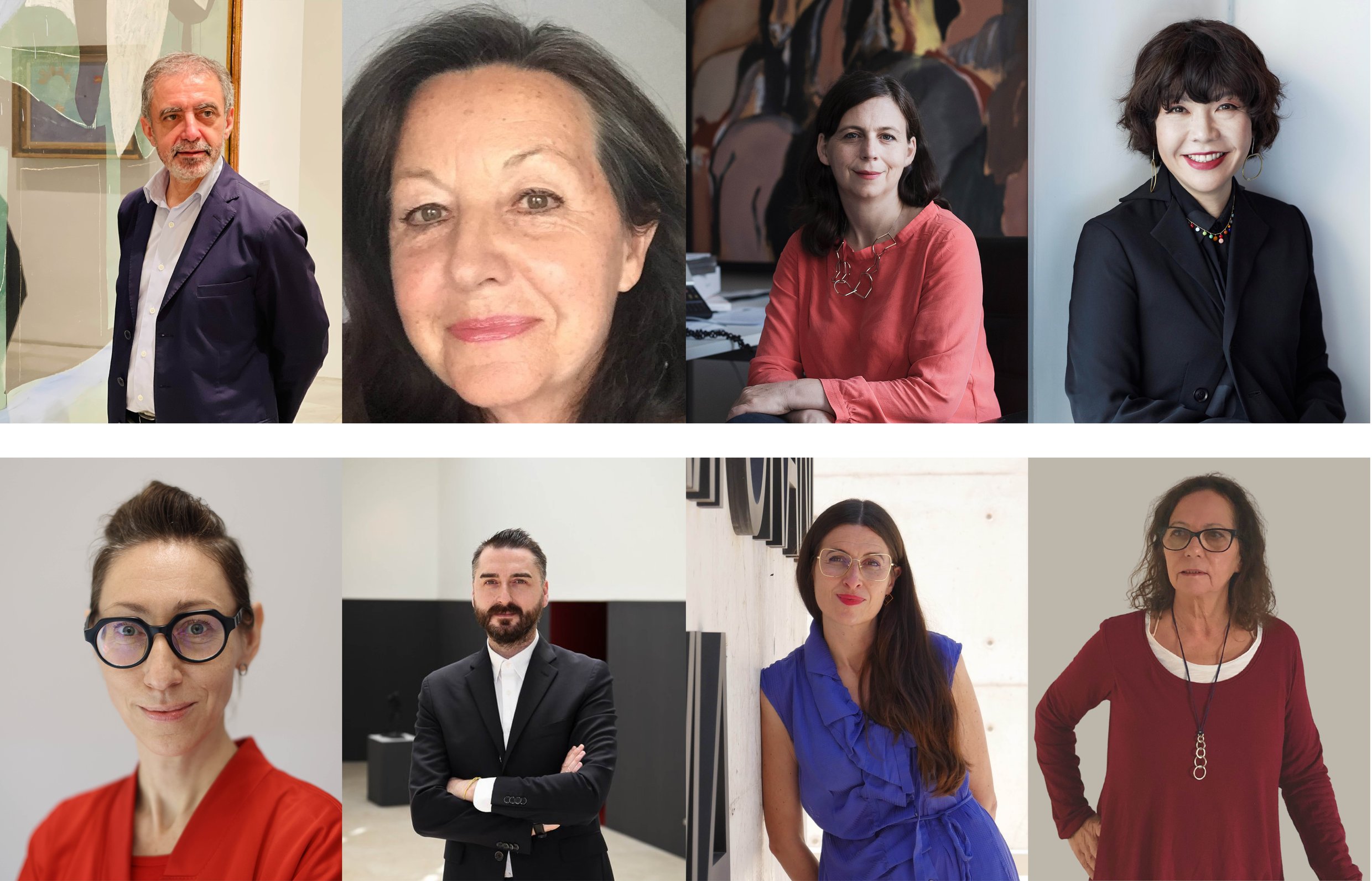
The 2022 Content Committee has worked on proposing themes taking into account the urgent and relevant issues affecting the development of the profession of curators and directors of modern and contemporary art museums, to ensure a vigorous and thoughtful debate.
- Manuel Borja-Villel, CIMAM Honorary Member, Director, Museo Nacional Centro de Arte Reina Sofía, Madrid
- Saskia Bos, CIMAM Board Member, Independent Curator, and Critic, Amsterdam
- Sarah Glennie, CIMAM Board Member, Director, National College of Art and Design, Dublin
- Mami Kataoka, CIMAM President, Director, Mori Art Museum, Tokyo
- Malgorzata Ludwisiak, CIMAM Board Member, Chief Curator, Department of Modern Art National Museum in Gdansk
- Agustín Pérez Rubio, (Chair of Contents Committee), CIMAM Board Member, Independent Curator, Madrid
- Imma Prieto, Director, Es Baluard Museu d'Art Contemporani de Palma, Palma, Mallorca
- Berta Sureda, Independent Culture Researcher and Manager, Palma, Mallorca.